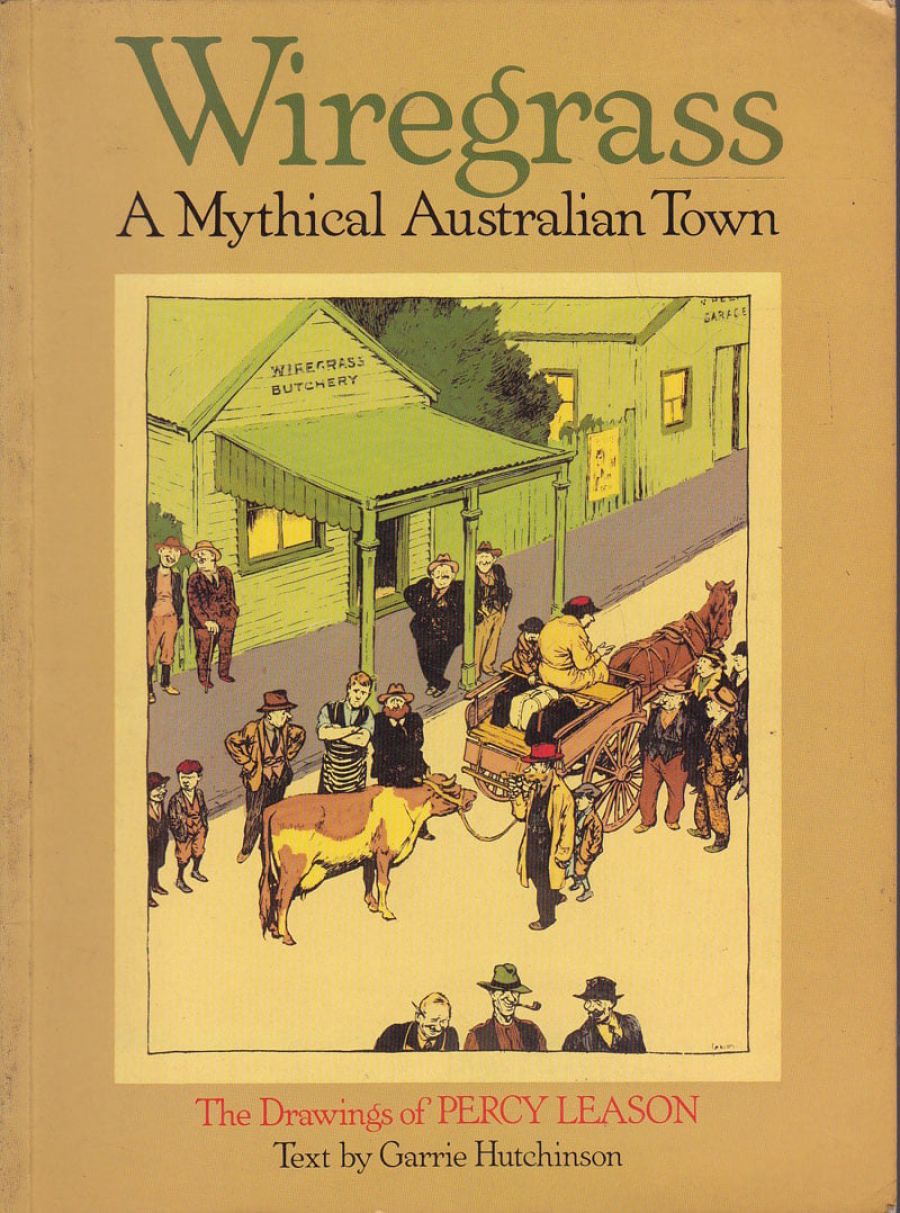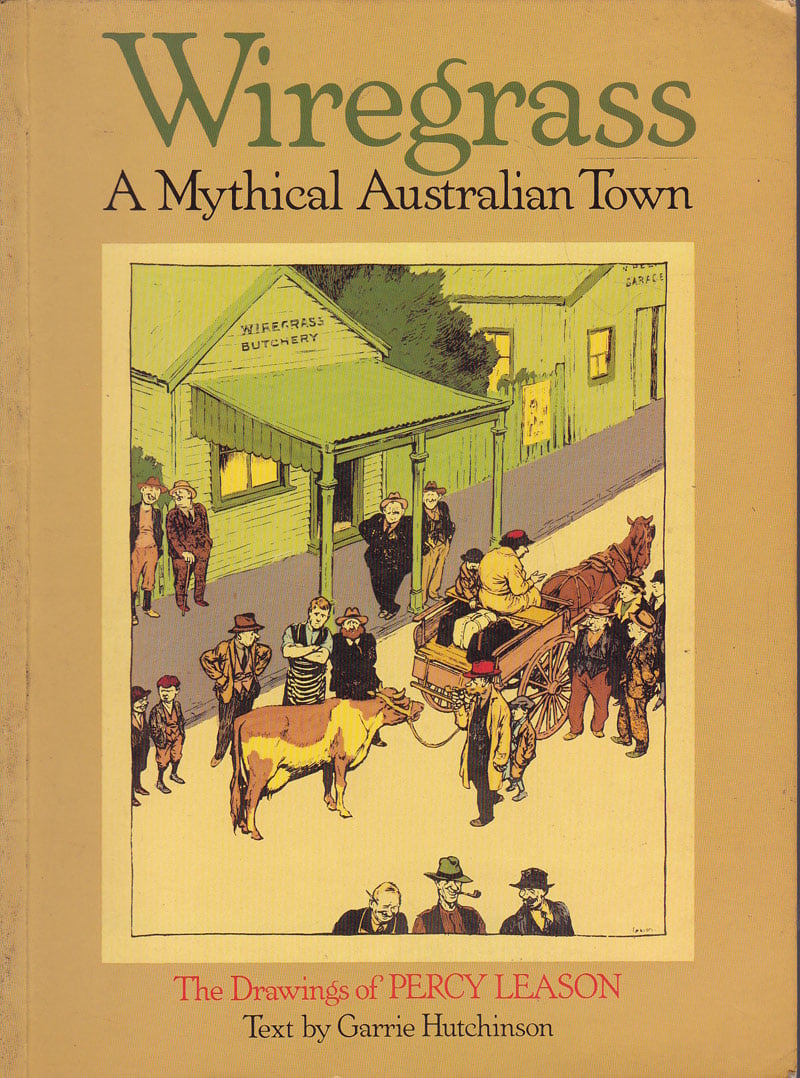
- Free Article: No
- Contents Category: Media
- Review Article: Yes
- Article Title: Leason's Lessons: Nhill
- Article Subtitle: Comedy beyond the city
- Online Only: No
- Custom Highlight Text:
From the beginnings of white settlement, Australia has had, an economy based almost entirely on rural production. The effects of a rural economy and population influencing broad social attitudes, not surprisingly, has resulted in a culture wherein the ‘up-country bushman’ and the legendary ‘outback’ are the very essence of this nation’s lore. And comedy has been a significant element of the lore. The early Australian writers ‘Steele Rudd’, Edward Dyson, ‘Banjo’ Patterson and Henry Lawson among many have celebrated some aspect of country life, as it was, with comedy; and so, of course, have the black and white artists working for the Australian press. Indeed, Australia today is the last remaining country observing her rural origins in graphic satire. One of the more significant twentieth century creators of Australian bush comedy was the magnificent pen-draughtsman Percy Leason.
- Book 1 Title: Wiregrass
- Book 1 Subtitle: The drawings of Percy Leason
- Book 1 Biblio: Lothian, $14.99 pb, 80 pp
- Book 1 Cover Small (400 x 600):

- Book 1 Cover (800 x 1200):

Leason’s career in art had its beginnings with the Melbourne commercial printing firm Sands and McDougall where he was apprenticed as a lithographer for five years, and attending night classes at the Melbourne Art Gallery. In 1917 he joined the Sydney studios of Smith and Julius as a commercial artist, producing, among other work, several drawings for book covers. These drawings declared his faultless draughtmanship, created with the pen using very fine nibs with etching-like delicacy, a technique Leason was only occasionally to abandon to produce tonally-perfect political cartoons in watercolour wash. Noted for its accuracy of detail, Leason’s draughtsmanship acknowledged a profound respect for the traditional grammar of drawing. His illustrations to the Selected Poems of Henry Lawson published during 1918 are examples of his astonishing technical skill, always apparent in his comic art too. As with those of Norman Lindsay, Leason’s pen drawings were built up with strokes of various weight to a state of perfect tonal balance – truly a form of pen painting.
Leason’s work came to the notice of Samuel Prior, editor of the Bulletin, that one-time Mecca for all aspiring cartoonists. When in 1914 the fiercely ambitious David Low left the Bulletin to cartoon for the London Star newspaper, Leason was invited to join the Bulletin staff, an offer he accepted; and together with cartoons of political comment, he produced some outstanding full-page tabloid-size drawings of comedy, and indeed tragedy, beyond the city on the farm. These drawings earned Leason a great measure of national fame, so much in fact that when Keith Murdoch (later Sir Keith) secured the then sixty-eight year old Melbourne Punch magazine for the Herald group in Melbourne, he personally tempted Leason away from Sydney and the Bulletin to join the staff of Punch in 1924 – such was the standing and eminence of, and the demand for, cartoonists of quality during that amazing period of Australian journalism between the wars.
At his new desk Percy Leason continued to draw his bush and ‘Dad Hayband’ comedy for just one year; then Punch – because of overspending, it is believed – ceased publication. Leason worked out his contract on Table Talk, another of the Herald group’s weekly magazines, until the last issue in September 1939. Leason renewed his association with the Bulletin, visited America, and settled in New York before the outbreak of World War II. He died there aged 70 in 1959.
Two developments appeared in Leason’s Table Talk drawings of rural comedy. Whilst his former creations had been viewed at eye level, he presented most of it now from a kestrel’s-eye-view with some incredibly daunting perspective and foreshortening. The second development was to unify his humour and situations around the fictitious country town he named ‘Wiregrass’, the title and subject of Garrie Hutchinson’s offering of Percy Leason’s comic art. This is a commendable, thoughtful selection, warmly appreciative of the artist’s humanity and observation, his great comic draughtsmanship, and his timeless humour, masterly for its perception and interpretation of bush-town people reacting to civilization’s faddish progress.
Wiregrass is a most worthy publication – but a plea! Line drawings correctly should be reproduced by the ‘line process’, not by the ‘half-tone’ dot. The expanding acceptance by Australian book publishers from authors offering those twenty-cent photo prints from State Library services can have disastrous results. When graphic references are drawn from newspaper and magazine sources, because State Libraries do not have the technology, the equipment, staff, or general facilities to present a top, professional product, the result does less than justice to an artist’s work. In plain words, the service was never designed for the purpose to which it is being put. Alternative methods are available – it costs more, but the results are near perfect.


Comments powered by CComment